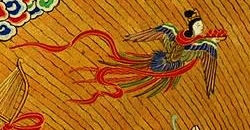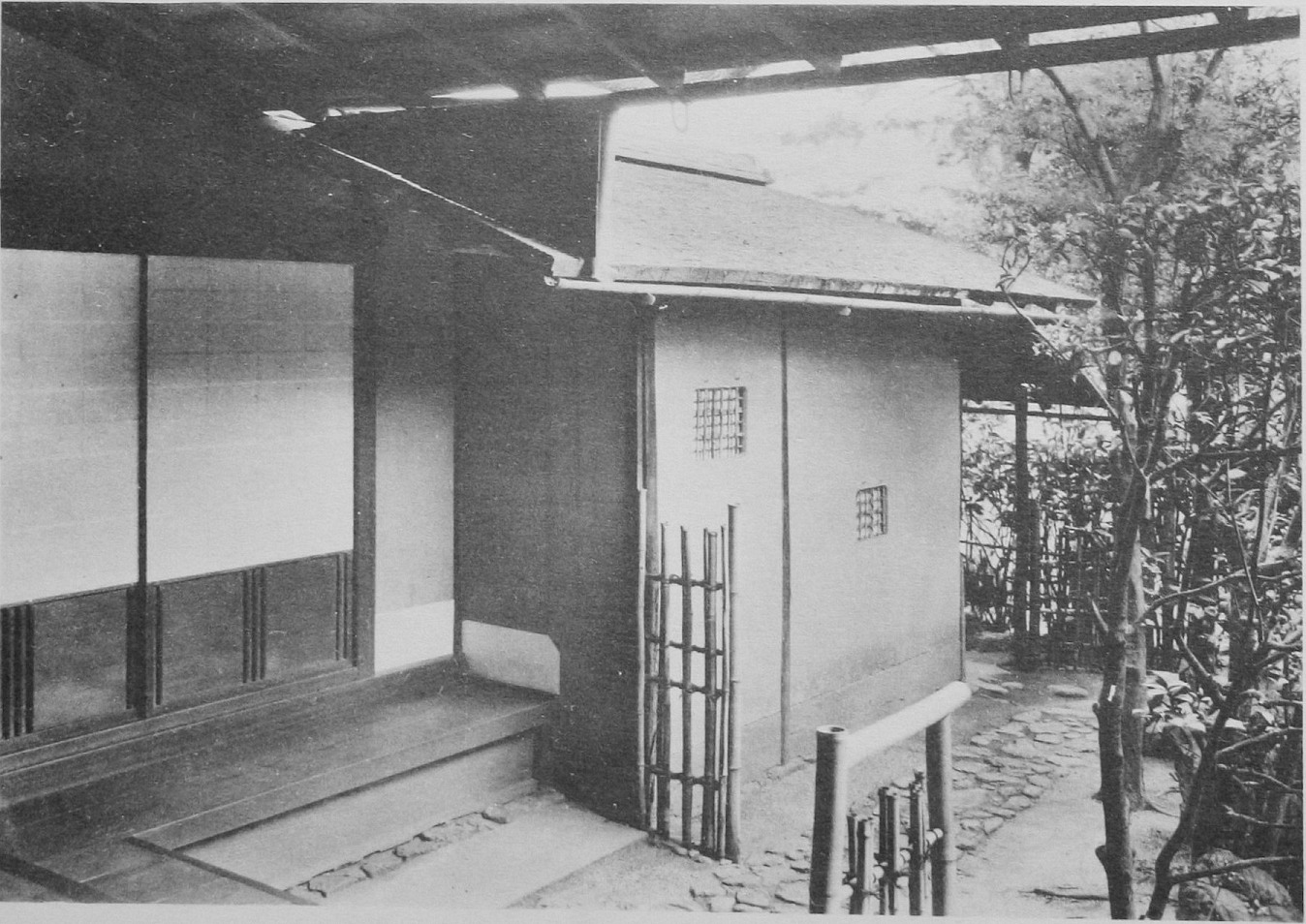|
Kalaviṅka
Kalaviṅka ( sa, कलविङ्क ''kalaviṅka''; Pali: karavika; ''Jiālíngpínqié''; ja, 迦陵頻伽, Karyōbinga, ko, 가릉빈가; vi, Ca Lăng Tần Già; my, ကရဝိက် karawik; th, การเวก, Malay: ''karawek'') is a fantastical immortal creature in Buddhism, with a human head and a bird's torso, with long flowing tail. The kalaviṅka is said to dwell in the Western pure land and reputed to preach the Dharma with its fine voice. It is said to sing while still unhatched within its eggshell. Its voice is a descriptor of the Buddha's voice. In Japanese text, it goes by various titles such as ,''Kojien'' dictionary, 2nd rev. ed., 1976, among others. Edward H. Schafer notes that in East Asian religious art the Kalaviṅka is often confused with the Kinnara, which is also a half-human half-bird hybrid mythical creature, but that the two are actually distinct and unrelated. Depictions In Burmese art The karaweik is commonly used as a motif i ... [...More Info...] [...Related Items...] OR: [Wikipedia] [Google] [Baidu] |
Kinnara
A kinnara is a celestial musician, part human and part bird, who are musically paradigmatic lovers, in Hinduism and Buddhism. In these traditions, the ''kinnaras'' (male) and ''kinnaris'' (female counterpart) are two of the most beloved mythological characters. Believed to come from the Himalayas, they often watch over the wellbeing of humans in times of trouble or danger. An ancient Indian string instrument is known as the Kinnari vina. Their character is also clarified in the '' Adi Parva'' of the ''Mahabharata'', where they say: They are featured in a number of Buddhist texts, including the Jataka tales and Lotus Sutra. In Southeast Asian Buddhist mythology, kinnaris, the female counterpart of kinnaras, are depicted as half-bird, half-woman creatures. One of the many creatures that inhabit the mythical Himavanta, kinnaris have the head, torso, and arms of a woman and the wings, tail and feet of a swan. They are renowned for their dance, song and poetry, and are a tradit ... [...More Info...] [...Related Items...] OR: [Wikipedia] [Google] [Baidu] |
Karaweik
Karaweik ( my, ကရဝိက် ဖောင် ) or Karaweik Hall is a palace on the eastern shore of Kandawgyi Lake Kandawgyi Lake ( my, ကန်တော်ကြီး ; literally "great royal lake", formerly Royal Lake), is one of two major lakes in Yangon, Burma (Myanmar). Located east of the Shwedagon Pagoda, the lake is artificial; water from Inya Lake ..., Yangon, Burma. Etymology The word ''karaweik'' comes from Pali Kalaviṅka, karavika (), which is a List_of_legendary_creatures_by_type#Birds, mythical bird with a melodious cry. Design The barge was designed by Burmese architect U Ngwe Hlaing, who based it on the Royal_barge#Burma_(Myanmar), ''Pyigyimon'' royal barge. Construction Construction began in June 1972 and it was finished in October 1974. Structure The barge is a two-storied construction of concrete and stucco, reinforced by iron rods, with a pyatthat-topped roof, two reception halls and a conference room. It houses a buffet restaurant today. Ref ... [...More Info...] [...Related Items...] OR: [Wikipedia] [Google] [Baidu] |
Birds AMIDA-KYŌ WAKUN ZUE 阿弥陀経和訓図会 迦陵頻伽 共命鳥
Birds are a group of warm-blooded vertebrates constituting the class Aves (), characterised by feathers, toothless beaked jaws, the laying of hard-shelled eggs, a high metabolic rate, a four-chambered heart, and a strong yet lightweight skeleton. Birds live worldwide and range in size from the bee hummingbird to the ostrich. There are about ten thousand living species, more than half of which are passerine, or "perching" birds. Birds have whose development varies according to species; the only known groups without wings are the extinct moa and elephant birds. Wings, which are modified forelimbs, gave birds the ability to fly, although further evolution has led to the loss of flight in some birds, including ratites, penguins, and diverse endemic island species. The digestive and respiratory systems of birds are also uniquely adapted for flight. Some bird species of aquatic environments, particularly seabirds and some waterbirds, have further evolved for swimming. Birds ... [...More Info...] [...Related Items...] OR: [Wikipedia] [Google] [Baidu] |
Ikaho, Gunma
was a town located in Kitagunma District, Gunma Prefecture, Japan. As of 2003, the town had an estimated population of 3,920 and a density of 175.63 persons per km2. The total area was 22.32 km2. On February 20, 2006, Ikaho, along with the villages of Komochi and Onogami (all in Kitagunma District), and the villages of Akagi and Kitatachibana (both in Seta District), was merged into the expanded city of Shibukawa. Situated on the slopes of Mount Haruna, an extinct volcano, Ikaho is well known for its hot springs. Ikaho is 2.5 hours from Shinjuku by express bus, and can be easily enjoyed on a day trip from Tokyo Onsen (Hot springs) Ikaho Onsen is one of Gunma's 4 large onsen. This makes it one of the main onsen locations in Japan. The onsen locations are usually open during weekdays, from 09:00 AM to 06:00 PM Ikaho Onsen has been called Kogane-no-Yu (The Golden Waters), but the waters used to be clear and colorless. However, due to the iron content, they turned dark ... [...More Info...] [...Related Items...] OR: [Wikipedia] [Google] [Baidu] |
Myōshin-ji
is a temple complex in Kyoto, Japan, and head temple of the associated branch of Rinzai Zen Buddhism. The Myōshin-ji school is by far the largest school in Rinzai Zen, approximately as big as the other thirteen branches combined: it contains within it about 3,400 temples throughout Japan, together with a handful overseas, of the approximately six thousand total Rinzai temples, and also has nineteen associated monasteries, of the total of forty monasteries and one nunnery. History The grounds of the temple were formally a palace for the Emperor Hanazono. Hanazono abdicated in 1318 and took the tonsure (became a monk) in 1335, and in 1342 donated the palace to found the temple; the district and many places in the area are named "Hanazono" in his honor. The head temple was founded in 1342 by the Zen master Kanzan Egen (関山慧玄, 1277–1360), third patriarch in the influential Ōtōkan lineage. Nearly all of the buildings were destroyed in the Ōnin War in 1467. However, many o ... [...More Info...] [...Related Items...] OR: [Wikipedia] [Google] [Baidu] |
Tōfuku-ji
is a Buddhist temple in Higashiyama-ku in Kyoto, Japan. Tōfuku-ji takes its name from two temples in Nara, Tōdai-ji and Kōfuku-ji.Japan ReferenceTōfuku-ji/ref> It is one of the Kyoto ''Gozan'' or "five great Zen temples of Kyoto". Its honorary '' sangō'' prefix is . History Tōfuku-ji was founded in 1236 by the imperial chancellor Kujō Michiie. He appointed the monk Enni as founding priest, who had studied Rinzai Zen Buddhism in China under the monk Wuzhun Shifan. The temple was burned but rebuilt in the 15th century according to original plans. Tofuku-ji was one of the five temples of the Five Mountain System. The temple was greatly reduced in size from 70 buildings to 25 during the Meiji era after the Shinbutsu bunri decree. In 1881, a fire burned down many major buildings such as the Main Hall, the ''Hōjo'', the ''Hattō'' and the statue of Sakyamuni Buddha. During the Russo-Japanese War , the temple area was requisitioned and became a prisoner-of-war camp fo ... [...More Info...] [...Related Items...] OR: [Wikipedia] [Google] [Baidu] |
Sen No Rikyū
, also known simply as Rikyū, is considered the historical figure with the most profound influence on ''chanoyu,'' the Japanese "Way of Tea", particularly the tradition of '' wabi-cha''. He was also the first to emphasize several key aspects of the ceremony, including rustic simplicity, directness of approach and honesty of self. Originating from the Sengoku period and the Azuchi–Momoyama period, these aspects of the tea ceremony persist. Rikyū is known by many names; for consistency, he will be referred to as Rikyū in this article. There are three ''iemoto'' (''sōke''), or 'head houses' of the Japanese Way of Tea, that are directly descended from Rikyū: the Omotesenke, Urasenke, and Mushakōjisenke, all three of which are dedicated to passing forward the teachings of their mutual family founder, Rikyū. Early life Rikyū was born in Sakai in present-day Osaka Prefecture. His father was a warehouse owner named , who later in life also used the family name Sen, and his ... [...More Info...] [...Related Items...] OR: [Wikipedia] [Google] [Baidu] |
Daitoku-ji
is a Buddhist temple, one of fourteen autonomous branches of the Rinzai school of Japanese Zen. It is located in Kita-ku, Kyoto, Japan. The "mountain name" ('' sangō'') by which it is known is . The Daitoku-ji temple complex today covers more than . History Daitoku-ji originated as a small monastery founded in 1315 or 1319 by the monk , who is known by the title ''Daitō Kokushi'' ("National Teacher of the Great Lamp") given by Emperor Go-Daigo. In 1325, the monastery was converted into a supplication hall for the imperial court at the request of the retired Emperor Hanazono. The dedication ceremony for the imperial supplication hall, with its newly added dharma hall and abbot's living quarters, was held in 1326, and this is generally recognized as the true founding of the temple.Kodansha Encyclopedia of Japan, entry "Daitokuji." Like many other temples in Kyoto during that time, the temple's buildings were destroyed by fire. In 1474, which was when Kyoto was the scene of the ... [...More Info...] [...Related Items...] OR: [Wikipedia] [Google] [Baidu] |
Hasegawa Tōhaku
was a Japanese painter and founder of the Hasegawa school. He is considered one of the great painters of the Azuchi–Momoyama period (1573-1603), and he is best known for his folding screens, such as ''Pine Trees'' and ''Pine Tree and Flowering Plants'' (both registered National Treasures), or the paintings in walls and sliding doors at Chishaku-in, attributed to him and his son (also National Treasures). Biography Hasegawa Tōhaku, born in 1539 in Nanao,"Suiboku-ga." Encyclopædia Britannica Online. December 10, 2009 a town in (in the vicinity of present-day Ishikawa ... [...More Info...] [...Related Items...] OR: [Wikipedia] [Google] [Baidu] |
Gagaku
is a type of Japanese classical music that was historically used for imperial court music and dances. was developed as court music of the Kyoto Imperial Palace, and its near-current form was established in the Heian period (794-1185) around the 10th century.History of gagaku Nihon gagakukai Today, it is performed by the in the . Gagaku consists of three primary repertoires: #Native [...More Info...] [...Related Items...] OR: [Wikipedia] [Google] [Baidu] |
Tokugawa Period
The or is the period between 1603 and 1867 in the history of Japan, when Japan was under the rule of the Tokugawa shogunate and the country's 300 regional ''daimyo''. Emerging from the chaos of the Sengoku period, the Edo period was characterized by economic growth, strict social order, isolationist foreign policies, a stable population, perpetual peace, and popular enjoyment of arts and culture. The period derives its name from Edo (now Tokyo), where on March 24, 1603, the shogunate was officially established by Tokugawa Ieyasu. The period came to an end with the Meiji Restoration and the Boshin War, which restored imperial rule to Japan. Consolidation of the shogunate The Edo period or Tokugawa period is the period between 1603 and 1867 in the history of Japan, when Japan was under the rule of the Tokugawa shogunate and the country's regional ''daimyo''. A revolution took place from the time of the Kamakura shogunate, which existed with the Tennō's court, to the Tokuga ... [...More Info...] [...Related Items...] OR: [Wikipedia] [Google] [Baidu] |



.jpg)



